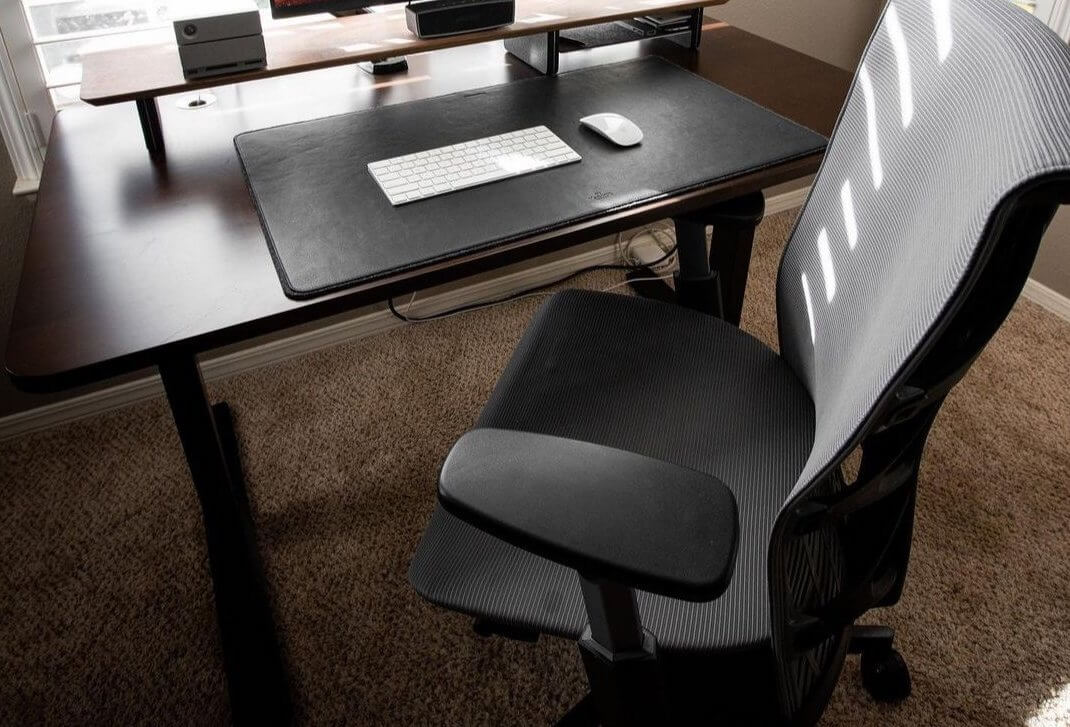According to a study of The American Journal of Preventative Medicine, we spend around 56 hours/week in sedentary behaviors. This is quite a large portion of time, and it can have some serious consequences on our health if we don’t take measures to offset it. One of the most common sedentary behaviors is sitting in an office chair, which many of us do for 8 hours or more every day. And while you may not think that sitting in an office chair is all that harmful, the truth is that it can be if you don’t sit properly.
Ergonomic office chairs are designed to improve posture and reduce strain on the spine, neck, and shoulders. These chairs are adjustable to fit your body size and have features such as lumbar support and armrests. Sitting in an office chair for long periods of time can be harmful to your health if you don’t do it properly.
Sitting in the wrong chair can be harmful to your health
- Sitting in an office chair that is not meant for ergonomics can put a lot of strain and pressure on your spine, neck, and shoulders. This can lead to pain and discomfort if this chair is not suitable for you.
The reasons the office chair is not suited for you:
- The backrest is too high or too low, preventing you from sitting with the natural curve of your spine.
- The armrests are at the wrong height, causing strain on your shoulders and neck.
- The seat is too hard or too soft, resulting in discomfort after sitting for long periods of time.
- The chair is not adjustable to fit your body size.
Follow these tips to find the perfect ergonomic office chair for you here.
- If you sit in an office chair for long periods of time without taking breaks, you may start to experience fatigue. This can make it difficult to concentrate and be productive.
- Don’t sit properly in an office chair cause of bad posture. This can lead to back pain, as well as other health problems such as headaches, joint pain, and muscle tension.
Bad posture from sitting in an office chair:
-First, slouching forward or rounding your shoulders can cause neck pain.
-Second, sitting with your legs crossed can cause pain in your hips and lower back.
-Third, leaning to one side can cause pain in your back and shoulders.
To avoid these problems, it is important to sit up straight in your office chair with your feet flat on the floor and your knees at a 90-degree angle. You should also take breaks every 30 minutes to get up and move around.
This causes some serious health problems such as obesity, type 2 diabetes, cancer, and cardiovascular disease. Therefore, paying attention to sitting posture is necessary to protect your health
How to stay safe
– First, support back. The office chair should have a lumbar (lower back) support to help you maintain the natural curve of your spine. If it doesn’t, you can use a small pillow or rolled-up towel to support your lower back.
– Second, allow your shoulders and neck to relax. The chair should be at a height that allows you to sit with your feet flat on the floor and your knees at a 90-degree angle. This will help prevent strain on your back, neck, and shoulders.
– Third, keep head level with your computer screen. Looking down at your screen for long periods of time can cause neck pain. To avoid this, your chair is at a height that allows you to look straight ahead at your screen. You may need to adjust your chair or use a footrest to achieve the proper height.
Sitting properly in an office chair is important for your health and well-being. By following the tips above, you can help prevent pain and strain from sitting in an office chair all day long.
There are some tips for you to have good sitting posture:
First, sit up straight and keep your back against the chair.
Secondly, put your feet flat on the floor. If necessary, you can use a footrest to support your feet.
Thirdly, adjust the height of your chair so that your feet are flat on the floor and your knees are at a 90-degree angle. You may need to use a footrest to achieve this.
Fourth, keep your shoulders relaxed and your arms close to your body, your wrists in a neutral position when typing to avoid strain on the tendons in your wrists.
Firth, make the backrest is at the correct height. This will support your lower back and help prevent strain on your spine. If your chair doesn’t provide proper spinal support, you can use a small pillow or rolled-up towel to support your lower back.
Sixth, keep your head level with your computer screen. Looking down at your screen for long periods of time can cause neck pain. To avoid this, adjust your chair or use a footrest to achieve the proper height.
Seventh, a keyboard that’s always in front of you so you don’t have to reach too far. The mouse should be close to the keyboard within easy reach. Your elbows should be at a 90-degree angle when typing. Keep your wrists in a neutral position when typing. Use a wrist rest when typing for long periods of time.
Lastly, avoid crossing your legs that cause strain on your back and hips. Instead, keep your feet flat on the floor or use a footrest to support your feet.
When sitting in an office chair, it is important to maintain good posture. This means sitting up straight with your back against the chair and your feet flat on the floor. You may need to use a footrest to support your feet if they do not reach the floor.
Taller seat properly in a chair
If you are taller or shorter than average, you may need to use a footrest to achieve this position. Alternatively, you can adjust the height of your chair.
Fatter seat properly in a chair
If you are overweight, it is important to choose a chair that can support your weight. Otherwise, you may experience back pain or other problems.
Pregnant women
Pregnant women often experience back pain due to the added weight of the baby. To avoid this, it is important to sit up straight and use a footrest to support your feet. You may also need to adjust the height of your chair.
What should we do to improve health after 8 hours on an office chair?
If you have chronic pain, there are specific exercises that can help to strengthen the muscles and improve posture.
Taking a break every 30 minutes to get up and move around will improve circulation and prevent fatigue.
Stretching exercises, such as reaching your arms overhead or touching your toes, can help reduce muscle tension and improve range of motion.
Yoga or Pilates classes may also help to improve flexibility and reduce muscle tension.
Sitting properly in an office chair is important for your health and well-being. By following the tips above, you can help prevent pain and strain from sitting in an office chair all day long.










